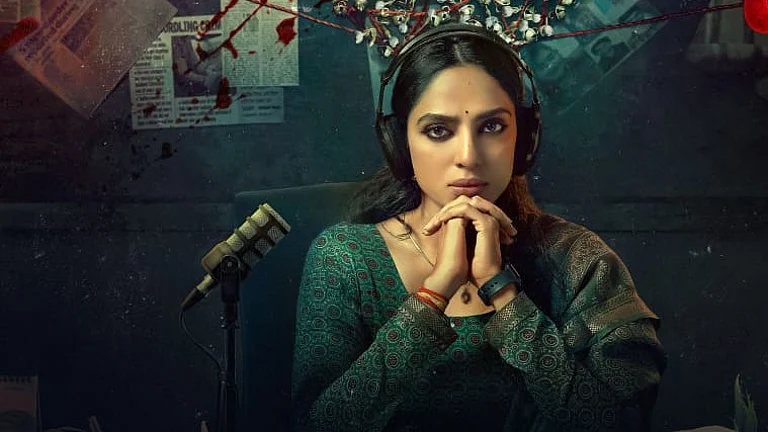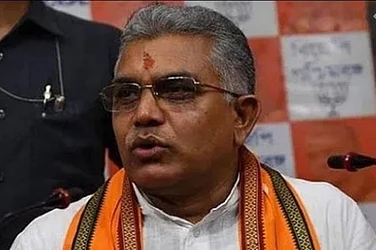Iran had never been a stranger to protests or dissent, but there was something different about the protests after Mahsa Amini's death last year.
Last year on September 16, Amini, a 22-year-old Iranian women of Kurdish ethnicity, died in the custody of the infamous Iranian 'morality police'. Three days earlier, she had been detained for an alleged violation of the country's dress code when she was out with her brother.
In Iran, women are required to wear Islamic head-covering called hijab in public. They are also barred from wearing form-fitting clothing or clothes that show skin. The mingling with the opposite gender is also regulated in public spaces.
While it was not the first custodial death in a country whose regime has long been infamous for custodial torture, Amini's death stirred something in the Iranian society and led to the biggest challenge to the regime in a long time. The death led to nationwide women-led protests in which women took over the streets, tore off their hijabs, and cut their hair publicly in defiance of the Iranian regime.
The Iranian regime responded with force, but the protests continued for months across the country. The Iranians paid heavy costs. In the past one year, hundreds have been killed in the crackdown and around 30,000 have been detained.
While Iran witnessed protests in 1999, 2009, and 2018 as well, the distinguishing feature of the protests after Amini's death was the centrality of women. It was a protests by the women and for the women — which also attracted men's participation. The 'Women, Life, Freedom' became the rallying cry of the movement and fear of the regime appeared to have been over with people —primarily women— willing to risk it all to take a stand. In a viral video, a woman was seeing tying her hair in a bun before joining a protest gathering. She was shot dead soon after. Despite several such incidents, the movement continued for months.
A year later now, however, the public protests have, however, died and the Iranian regime has increased the crackdown on dissent. The morality police are back in the streets and the surveillance has increased. The regime is also set to bring in new laws for the wearing of hijbs. Under these proposals, the punishment as well as associated costs of violations have been included, such as ban on internet usage and ban on travel. Similar to the medieval period where women not falling in line with the patriarchal mould were labelled witches, judges in Iran have also started ruling women violating hijab rules as mentally-ill.
At Outlook, we have covered the Iranian women's movement since the onset. We have traced the history of hijab in Iran, the centrality of women in the protests, the role of sportspersons and actresses in amplifying the movement and the costs they have paid, and the new manners in which the Iranian regime is now sharpening its assault on women's freedom and agency.
Outlook's April 21, 2023 issue was dedicated to the Iranian women's movement. Outlook Editor Chinki Sinha in her article 'Zan, Zendegī, Āzādī', titled after the rallying cry of women's movement, noted the central theme of women's bodily and personal autonomy. From India's Karnataka where women were fighting for the right to wear hijab to Iran where women were fighting against the imposition of hijab, Sinha wrote that the women's movement are to make their own decisions.
"There are stories of oppression of women everywhere. In India, women in Karnataka have fought to wear the hijab. What we choose to wear should be our decision and not dictated by the state or the custodians of religion. Not all revolutions succeed and that’s not the point of uprisings. The point is that we can and must fight against antiquated views. That is hope and hope is powerful. It sustains us. The Shaheen Bagh movement led by common Muslim women at first, and later joined in by others, are historic moments," writes Sinha.
In her piece, Sara Hassani wrote about the centrality of women in resistance in Iran. She traces the origin of the rise of the Islamic clergy in Iran and notes, "Women have always played, and continue to play, an incredibly significant role in Iranian politics. We can trace modern feminist movements in Iran back to the time of the constitutional revolution at the turn of the 20th century. Unfortunately, it is between 1905-1911, during this revolution, that we see the beginnings of today’s gender apartheid system start to take hold. Prior to this development, the clergy was not involved in Iranian politics."
Filmmaker Mohsen Makhmalbaf tells Abhik Bhattacharya in an interview that hope is alive in Iran and a new Iran will soon emerge where democracy will write history, not dictatorships.
Beyond the magazine issue too, we have continuosly covered the Iranian movement in-depth. Shortly after the onset of protests last year, Madhur Sharma traced the history of hijab rules in Iran and how the women protesters were not just challenging the regime but the legitimacy of the Islamic Revolution itself.
Shreya Basak wrote about the 'cyberfeminism' driving the women's movement in Iran and other oppressive societies. The internet has emerged as a uniting force in recent years in protests. Tracing cyberfeminism in Iran, Basak noted, "An example of cyberfeminism can be traced back to June 2009 uprising following Iran's presidential election that sparked the immediate scattering of its women's rights leaders across the globe. Activists living in exile took their activities online to pursue on-the-ground projects, initiating online campaigns and raising feminist awareness."
Madhur has also tracked the role of celebrities like actors, singers, and sportspersons in the Iranian movement. Chess player Sara Khadem had to relocate to Europe after threats to her life after defying the regime. Elnaz Rekabi had her house demolished for the defiance. Three leading actresses of the country ruled by judges as mentally ill for their defiance.
We have also examined the proposed new hijab law that the Iranian regime is expected to bring shortly. In addition to cracking down on women's dressing, the focus is also on increasing gender segregation in public places, cracking down on businesses supporting protests, and affecting careers of celebrities for dissent by banning their use of internet and travel.


























